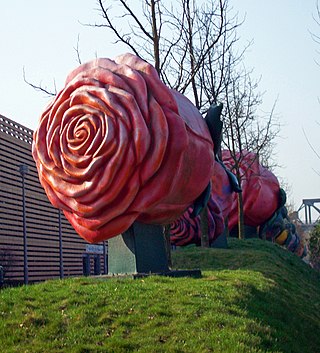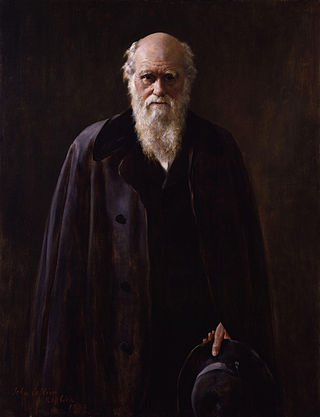
A copyright is a type of intellectual property that gives the creator of an original work, or another owner of the right, the exclusive, legally secured right to copy, distribute, adapt, display, and perform a creative work, usually for a limited time. The creative work may be in a literary, artistic, educational, or musical form. Copyright is intended to protect the original expression of an idea in the form of a creative work, but not the idea itself. A copyright is subject to limitations based on public interest considerations, such as the fair use doctrine in the United States.
The copyright law of the European Union is the copyright law applicable within the European Union. Copyright law is largely harmonized in the Union, although country to country differences exist. The body of law was implemented in the EU through a number of directives, which the member states need to enact into their national law. The main copyright directives are the Copyright Term Directive, the Information Society Directive and the Directive on Copyright in the Digital Single Market. Copyright in the Union is furthermore dependent on international conventions to which the European Union or their member states are part of, such as TRIPS Agreement or the Berne Convention.

Walter v Lane [1900] AC 539, was a judgement of the House of Lords on the question of Authorship under the Copyright Act 1842. It has come to be recognised as a seminal case on the notion of originality in copyright law and has been upheld as an early example of the sweat of the brow doctrine.

The idea–expression distinction or idea–expression dichotomy is a legal doctrine in the United States that limits the scope of copyright protection by differentiating an idea from the expression or manifestation of that idea.

A database right is a sui generis property right, comparable to but distinct from copyright, that exists to recognise the investment that is made in compiling a database, even when this does not involve the "creative" aspect that is reflected by copyright. Such rights are often referred to in the plural: database rights.
Originality is the aspect of created or invented works that distinguish them from reproductions, clones, forgeries, or substantially derivative works. The modern idea of originality is according to some scholars tied to Romanticism, by a notion that is often called romantic originality. The validity of "originality" as an operational concept has been questioned. For example, there is no clear boundary between "derivative" and "inspired by" or "in the tradition of."
The threshold of originality is a concept in copyright law that is used to assess whether a particular work can be copyrighted. It is used to distinguish works that are sufficiently original to warrant copyright protection from those that are not. In this context, "originality" refers to "coming from someone as the originator/author", rather than "never having occurred or existed before".

In copyright law, related rights are the rights of a creative work not connected with the work's actual author. It is used in opposition to the term "authors' rights". Neighbouring rights is a more literal translation of the original French droits voisins. Both authors' rights and related rights are copyrights in the sense of English or U.S. law.
The Japanese Society for Rights of Authors, Composers and Publishers, often referred to as JASRAC, is a Japanese copyright collection society. It was founded in 1939 as a nonprofit organization, and is the largest musical copyright administration society in Japan.

Telstra Corporation Ltd v Desktop Marketing Systems Pty Ltd was a 2001–2002 case in the Federal Court of Australia in which Telstra successfully argued that its copyright had been infringed by the reproduction of data from the White and Yellow Pages telephone directories in CD-ROM format.

Freedom of panorama (FOP) is a provision in the copyright laws of various jurisdictions that permits taking photographs and video footage and creating other images of buildings and sometimes sculptures and other art works which are permanently located in a public place, without infringing on any copyright that may otherwise subsist in such works, and the publishing of such images. Panorama freedom statutes or case law limit the right of the copyright owner to take action for breach of copyright against the creators and distributors of such images. It is an exception to the normal rule that the copyright owner has the exclusive right to authorize the creation and distribution of derivative works.
Feist Publications, Inc., v. Rural Telephone Service Co., 499 U.S. 340 (1991), was a landmark decision by the Supreme Court of the United States establishing that information alone without a minimum of original creativity cannot be protected by copyright. In the case appealed, Feist had copied information from Rural's telephone listings to include in its own, after Rural had refused to license the information. Rural sued for copyright infringement. The Court ruled that information contained in Rural's phone directory was not copyrightable and that therefore no infringement existed.

Bridgeman Art Library v. Corel Corp., 36 F. Supp. 2d 191, was a decision by the United States District Court for the Southern District of New York, which ruled that exact photographic copies of public domain images could not be protected by copyright in the United States because the copies lack originality. Even though accurate reproductions might require a great deal of skill, experience and effort, the key element to determine whether a work is copyrightable under US law is originality.
Japanese copyright laws consist of two parts: "Author's Rights" and "Neighbouring Rights". As such, "copyright" is a convenient collective term rather than a single concept in Japan. Japan was a party to the original Berne convention in 1899, so its copyright law is in sync with most international regulations. The 1899 law protected copyrighted works for 30 years after the author's death. Law changes promulgated in 1970 extended the duration to 50 years. However, in 2004 Japan further extended the copyright term to 70 years for cinematographic works. At the end of 2018, as a result of the Trans-Pacific Partnership negotiations and a requirement stemming from the EU–Japan Economic Partnership Agreement., the 70 year term was applied to all works. This new term was not applied retroactively; works that had entered the public domain between 1999 and 29 December 2018 (inclusive) due to expiration remained in the public domain.
Under the law of the United Kingdom, a copyright is an intangible property right subsisting in certain qualifying subject matter. Copyright law is governed by the Copyright, Designs and Patents Act 1988, as amended from time to time. As a result of increasing legal integration and harmonisation throughout the European Union a complete picture of the law can only be acquired through recourse to EU jurisprudence, although this is likely to change by the expiration of the Brexit transition period on 31 December 2020, the UK has left the EU on 31 January 2020. On 12 September 2018, the European Parliament approved new copyright rules to help secure the rights of writers and musicians.

In July 2009, lawyers representing the National Portrait Gallery of London (NPG) sent an email letter warning of possible legal action for alleged copyright infringement to Derrick Coetzee, an editor/administrator of the free content multimedia repository Wikimedia Commons, hosted by the Wikimedia Foundation.

Paraphrasing of copyrighted material may, under certain circumstances, constitute copyright infringement. In most countries that have national copyright laws, copyright applies to the original expression in a work rather than to the meanings or ideas being expressed. Whether a paraphrase is an infringement of expression, or a permissible restatement of an idea, is not a binary question but a matter of degree. Copyright law in common law countries tries to avoid theoretical discussion of the nature of ideas and expression such as this, taking a more pragmatic view of what is called the idea/expression dichotomy. The acceptable degree of difference between a prior work and a paraphrase depends on a variety of factors and ultimately depends on the judgement of the court in each individual case.
Copyright in compilation is a facet of copyright law that may provide copyright protection to a compilation of material, irrespective of copyright in the underlying material.
The labor theory of copyright, also known as the natural rights theory, is one of the most prominent theories of copyright, among others like the personality theory and the incentive/welfare theory. According to the labor theory, an individual has a right to the product of their labor, whether physical or intellectual. It is based on the John Locke's labor theory of property which says that persons are entitled to the fruits of their own labor, and by extension, intellectual property can be viewed as the fruits of an individual's mental labor. While the Lockean theory was originally intended for conventional forms of property, it can be extended to justify intellectual property in general and copyright in particular if we view an owner's claim to traditional forms of property as being analogous to an author's claims over their intellectual property.

IceTV Pty Ltd v Nine Network Australia Pty Ltd is a 2009 decision of the High Court of Australia concerning the application of copyright law to a compilation of television schedules broadcast by the Nine Network and published by IceTV.






